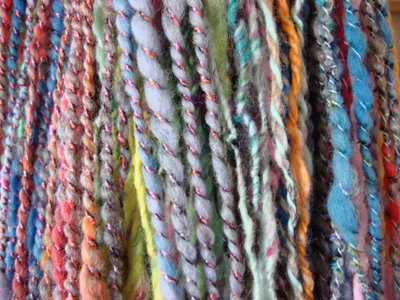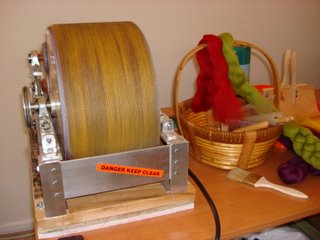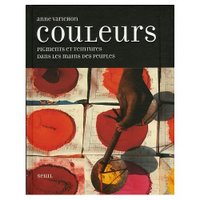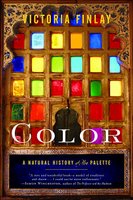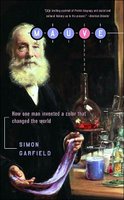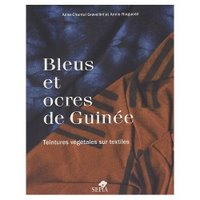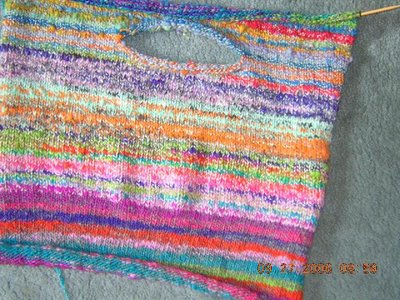 I didn't want to be limited to hats and mitts, so I attempted to knit a sweater with a dozen small skeins, inspired by this photo below.
I didn't want to be limited to hats and mitts, so I attempted to knit a sweater with a dozen small skeins, inspired by this photo below.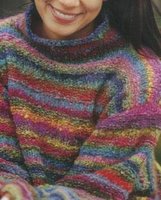 The knitted up fabric looked great. However, because I used US size 8 needles, the result was too stiff to be comfy as a sweater. In fact, it was more suitable for a placemat. The project is now frogged and I've swatched with a US size 11 and it's now just fine!
The knitted up fabric looked great. However, because I used US size 8 needles, the result was too stiff to be comfy as a sweater. In fact, it was more suitable for a placemat. The project is now frogged and I've swatched with a US size 11 and it's now just fine!The dozen or so yarns linked together to create a huge hank.
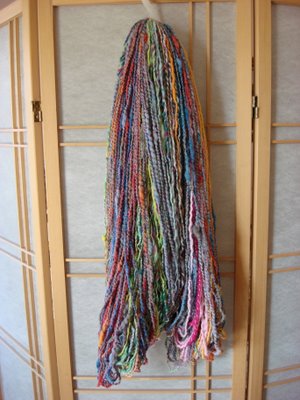
The yarns up close.
